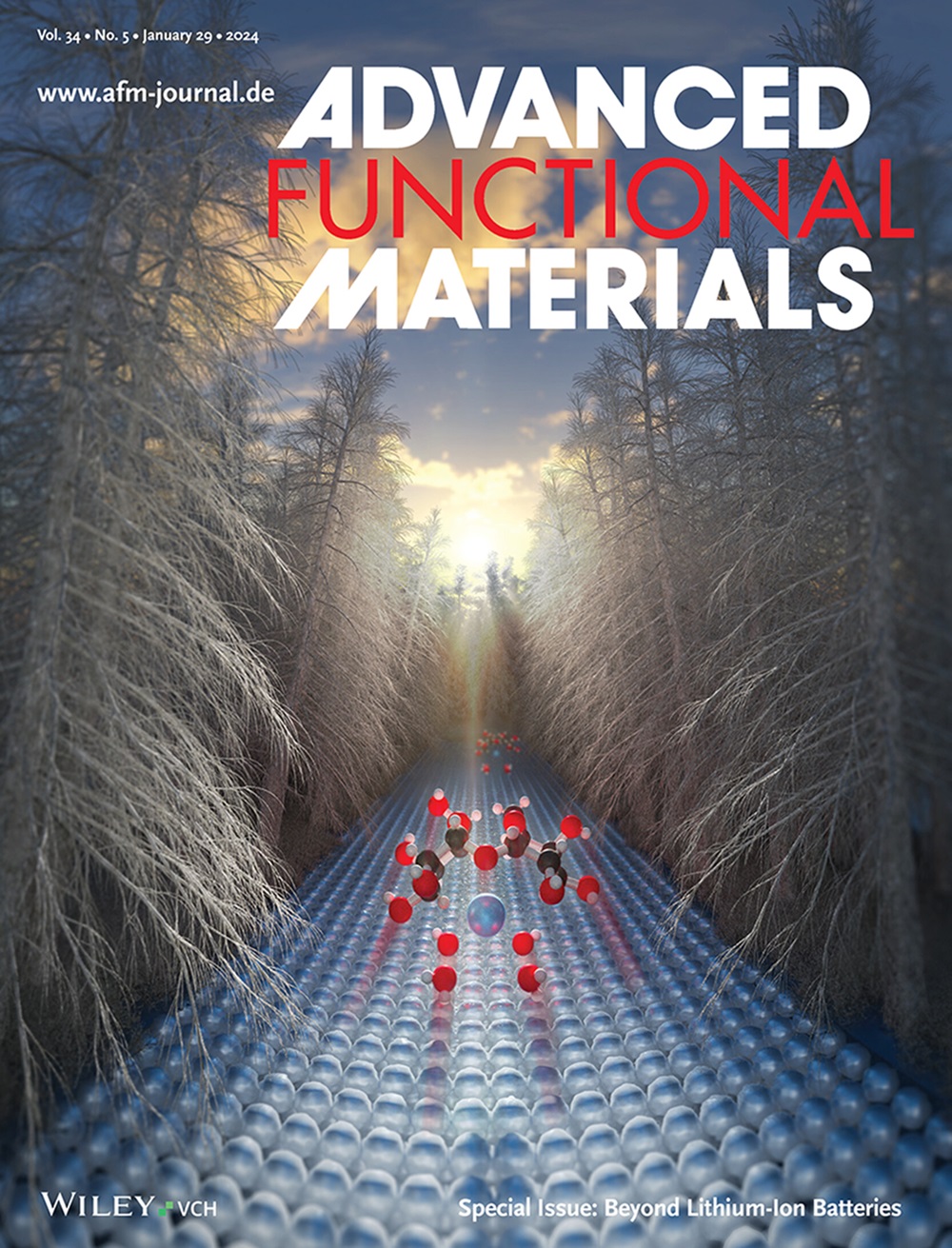Engineering Metal Electron Spin Polarization to Regulate p‐Band Center of Se for Enhanced Sodium‐Ion Storage
IF 18.5
1区 材料科学
Q1 CHEMISTRY, MULTIDISCIPLINARY
引用次数: 0
Abstract
Sluggish ion diffusion of large sodium ions is one of the main drawbacks challenging the development of metal selenides‐based anode materials for sodium‐ion batteries (SIBs). A spin‐state regulating strategy is first proposed in this work to lift the p‐band center (ɛ

利用金属电子自旋极化工程调节硒的 p 波段中心以增强钠离子存储能力
大钠离子扩散缓慢是钠离子电池 (SIB) 金属硒化物阳极材料开发过程中面临的主要挑战之一。本研究首次提出了一种自旋态调节策略,以提升 Se 的 p 波段中心(ɛp),从而在(Co,Cu)Se2 中实现快速的 Na+ 转移动力学。通过利用从 Cu 到 Co 的电子转移,Co 的 π 对称 t2g 被完全占据,从而降低了自旋极化。Co 和 Se 之间由此产生的电子排斥削弱了 Co-Se 键,从而提高了 Se 的ɛp。钠吸附能的增强有效地加速了活性材料-电解质界面上的离子转移。因此,(Co,Cu)Se2/NC 电极显示出卓越的钠存储性能,在 0.2 A g-1 时容量为 445 mAh g-1,在 50 A g-1 时容量为 312 mAh g-1,在 10.0 A g-1 时循环 10,000 次后容量为 363 mAh g-1。对调节金属自旋态以提升硒的 p 带中心的工作机制的深入了解,可为开发基于金属硒化物的正极材料和高性能 SIB 提供指导。
本文章由计算机程序翻译,如有差异,请以英文原文为准。
求助全文
约1分钟内获得全文
求助全文
来源期刊

Advanced Functional Materials
工程技术-材料科学:综合
CiteScore
29.50
自引率
4.20%
发文量
2086
审稿时长
2.1 months
期刊介绍:
Firmly established as a top-tier materials science journal, Advanced Functional Materials reports breakthrough research in all aspects of materials science, including nanotechnology, chemistry, physics, and biology every week.
Advanced Functional Materials is known for its rapid and fair peer review, quality content, and high impact, making it the first choice of the international materials science community.
文献相关原料
| 公司名称 | 产品信息 | 采购帮参考价格 |
|---|
 求助内容:
求助内容: 应助结果提醒方式:
应助结果提醒方式:


